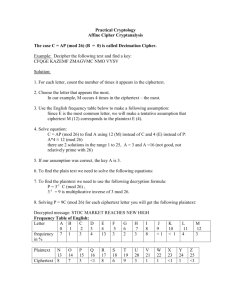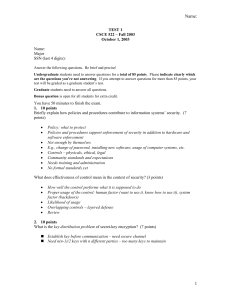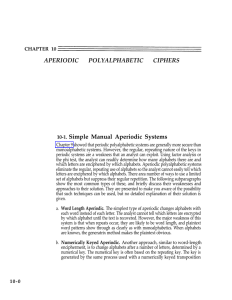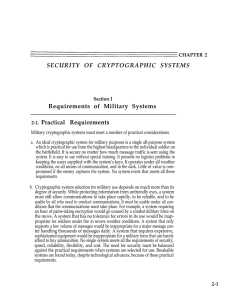Practical Cryptology
advertisement
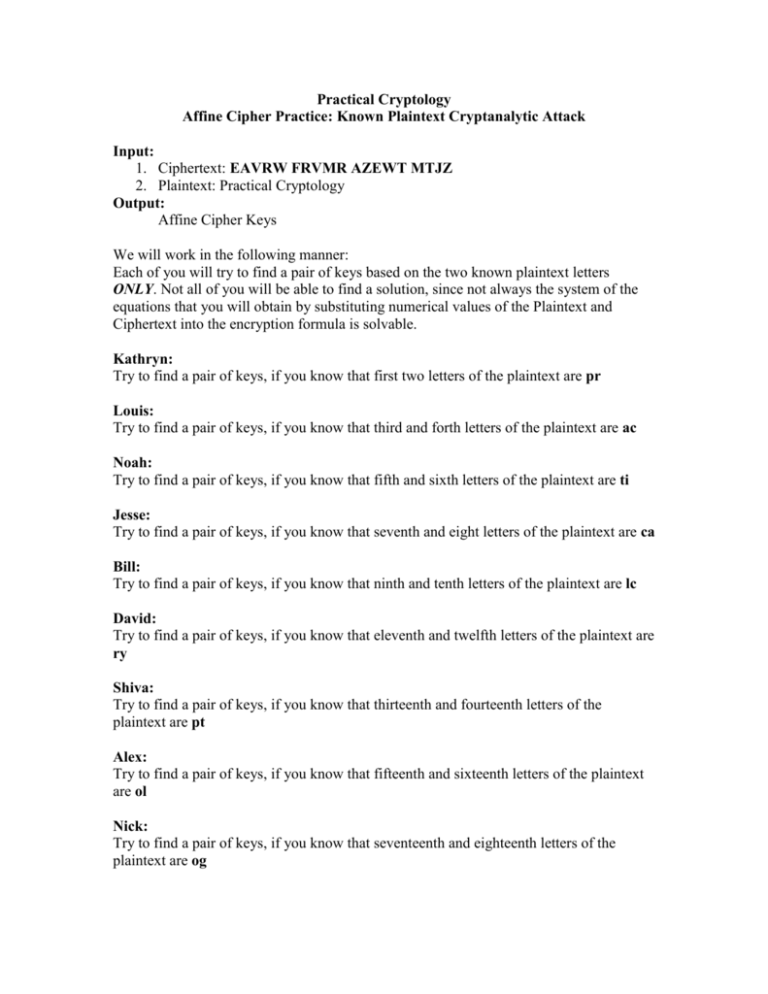
Practical Cryptology Affine Cipher Practice: Known Plaintext Cryptanalytic Attack Input: 1. Ciphertext: EAVRW FRVMR AZEWT MTJZ 2. Plaintext: Practical Cryptology Output: Affine Cipher Keys We will work in the following manner: Each of you will try to find a pair of keys based on the two known plaintext letters ONLY. Not all of you will be able to find a solution, since not always the system of the equations that you will obtain by substituting numerical values of the Plaintext and Ciphertext into the encryption formula is solvable. Kathryn: Try to find a pair of keys, if you know that first two letters of the plaintext are pr Louis: Try to find a pair of keys, if you know that third and forth letters of the plaintext are ac Noah: Try to find a pair of keys, if you know that fifth and sixth letters of the plaintext are ti Jesse: Try to find a pair of keys, if you know that seventh and eight letters of the plaintext are ca Bill: Try to find a pair of keys, if you know that ninth and tenth letters of the plaintext are lc David: Try to find a pair of keys, if you know that eleventh and twelfth letters of the plaintext are ry Shiva: Try to find a pair of keys, if you know that thirteenth and fourteenth letters of the plaintext are pt Alex: Try to find a pair of keys, if you know that fifteenth and sixteenth letters of the plaintext are ol Nick: Try to find a pair of keys, if you know that seventeenth and eighteenth letters of the plaintext are og Yana: Try to find a pair of keys, if you know that 18th and 19th letters of the plaintext are gy Use the following material: A 0 B 1 Numerical Values of the Alphabet: C 2 D 3 E 4 F 5 G 6 H 7 I 8 J 9 K 10 L 11 M 12 N 13 O 14 P 15 Q 16 R 17 S 18 T 19 U 20 V 21 W 22 X 23 Affine Cipher Encryption Formula: C = ( aP + b )(mod 26) How to solve the system of the equations that will be obtained after substitution of the numerical values of the letters into encryption formula: Theorem: Let a, b, c, d, e, f, and m be integers, m > 0, such that (D, m) = 1 (D is relatively prime to m), where D = ad – bc. Then the system of congruencies ax + by ≡ e ( mod m) cx + dy ≡ f (mod m) has a unique solution modulo m, given by: x = D-1 (de – bf) (mod m) y = D-1 (af - ce) (mod m) Pay Attention!!! D is relatively prime to m, in our case m is 26. If D is NOT RELATIVELY PRIME TO 26, THERE IS NO SOLUTION TO THE SYSTEM OF THE EQUESTIONS, AND IT MEANS THAT THE PAIR THAT YOU ARE WORKING WITH IS A “BAD” PAIR. Y 24 Z 25


